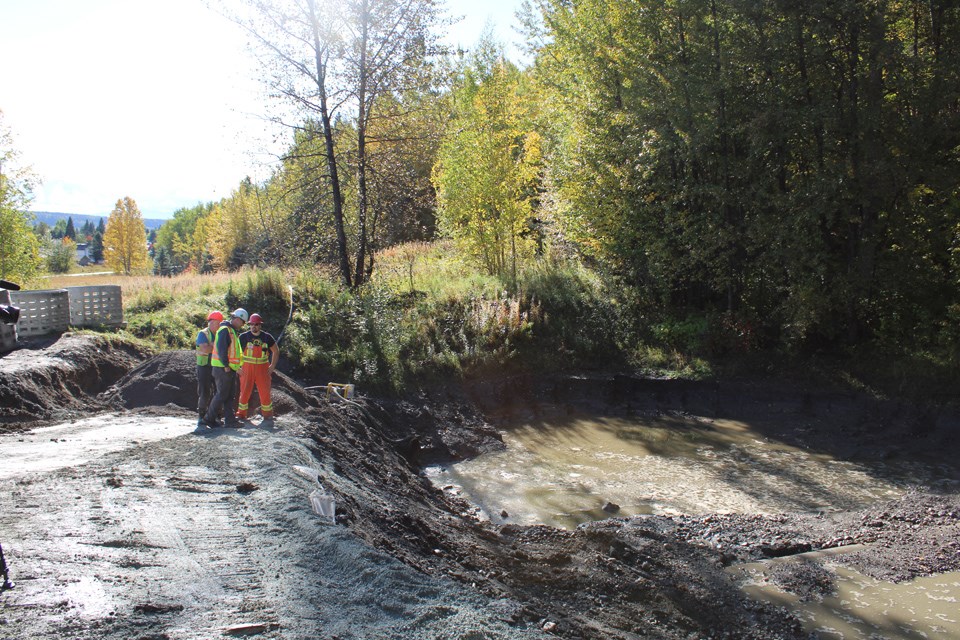Avid dog walkers might have noticed that work is currently underway to clean out the pond at Ginter’s Field as the city tries to keep up with its vast network of stormwater infrastructure.
“We got the crew here and we are doing some maintenance at the base of Shane Creek,” said Al Clark, development engineer with the city.
The pond was designed to capture and settle sediment from the creek before it flows back out into the watershed.
“We are in a bowl so we have to manage flows that come through higher escarpments through the city which naturally end up in the Nechako and the Fraser,” said Clark.
“There are multiple channels we have to maintain particularly in the springtime when we are having quick thaws. There are a lot of problem areas that need maintenance.”
If the sediment from the pond was not removed there would be a risk of overland flooding in Ginter’s Field as the water would have no place to sit.
The city has about 25 settlement ponds which need to be drained every 20 years that can cost up to $100,000.
The city is currently working on an Integrated Stormwater Management Plan (ISMP) which will guide ways to finance the maintenance of this infrastructure.
The plan is so critical to the city because Prince George has a large geographic size but a small population. The city has twice as many storm sewers and ditches than similar municipalities.
For example, Prince George has almost twice as many storm sewers and ditches than Kelowna, but half the tax-paying population.
A lot of the city’s infrastructure was also built in the 1970s when the city was experiencing a population growth that eventually plateaued.
A detailed analysis found that over the last five years the city has spent on average $4.4 million per year on stormwater management but even this does not provide enough to meet maintenance and replacement requirements.
An additional $4.7 million annually on average would be required to keep the stormwater system in good working order.
“We need to basically double that in order to be sustainable which means to be able to provide the service in the long term for future generations,” said Kristy Bobbie, the city’s asset manager.
“We really needed to create an integrated stormwater management plan because of all of our aging infrastructure. A lot of our infrastructure was done in the 70s and it is starting to age and we are seeing it fail like the Winnipeg sinkhole.”
Several sinkholes occurred near Winnipeg and Carney Streets until the city replaced a failed section of sewer pipe in 2018.
Bobbie said the pond project at Ginter’s Field is a good example of the ongoing maintenance work that is needed to upkeep the city’s stormwater infrastructure.
“We also want to make sure we are doing development in really environmentally conscious ways. We want to make sure we are economically viable but also protecting our waterways and keeping our water clean.”
She said stormwater management not only helps keep fish habitats clean but also protects roads and properties from flooding.
“It really impacts everyone’s lives even though we don’t often see it.”
The city is encouraging all residents to learn more about the city’s municipal stormwater infrastructure and fill out a survey to provide feedback.
The survey will be open until Oct. 4 and the results will be used to inform the ISMP.
“We really just want to educate the public on what stormwater is and how it actually touches their lives and they might not even know it,” added Bobbie.
The city will be conducting further public engagement activities relation to the ISMP in the coming year and providing updates to council and the public.



